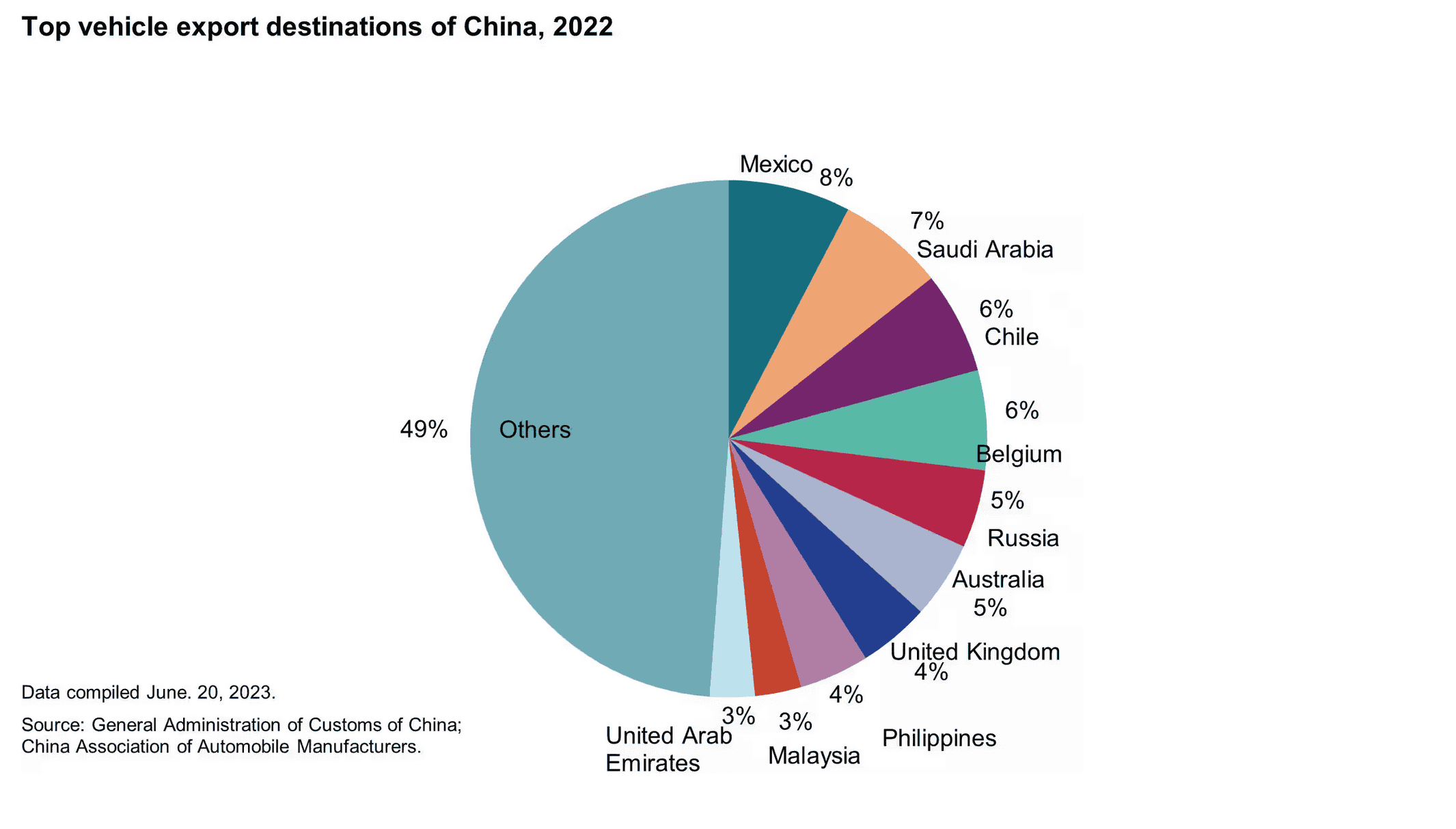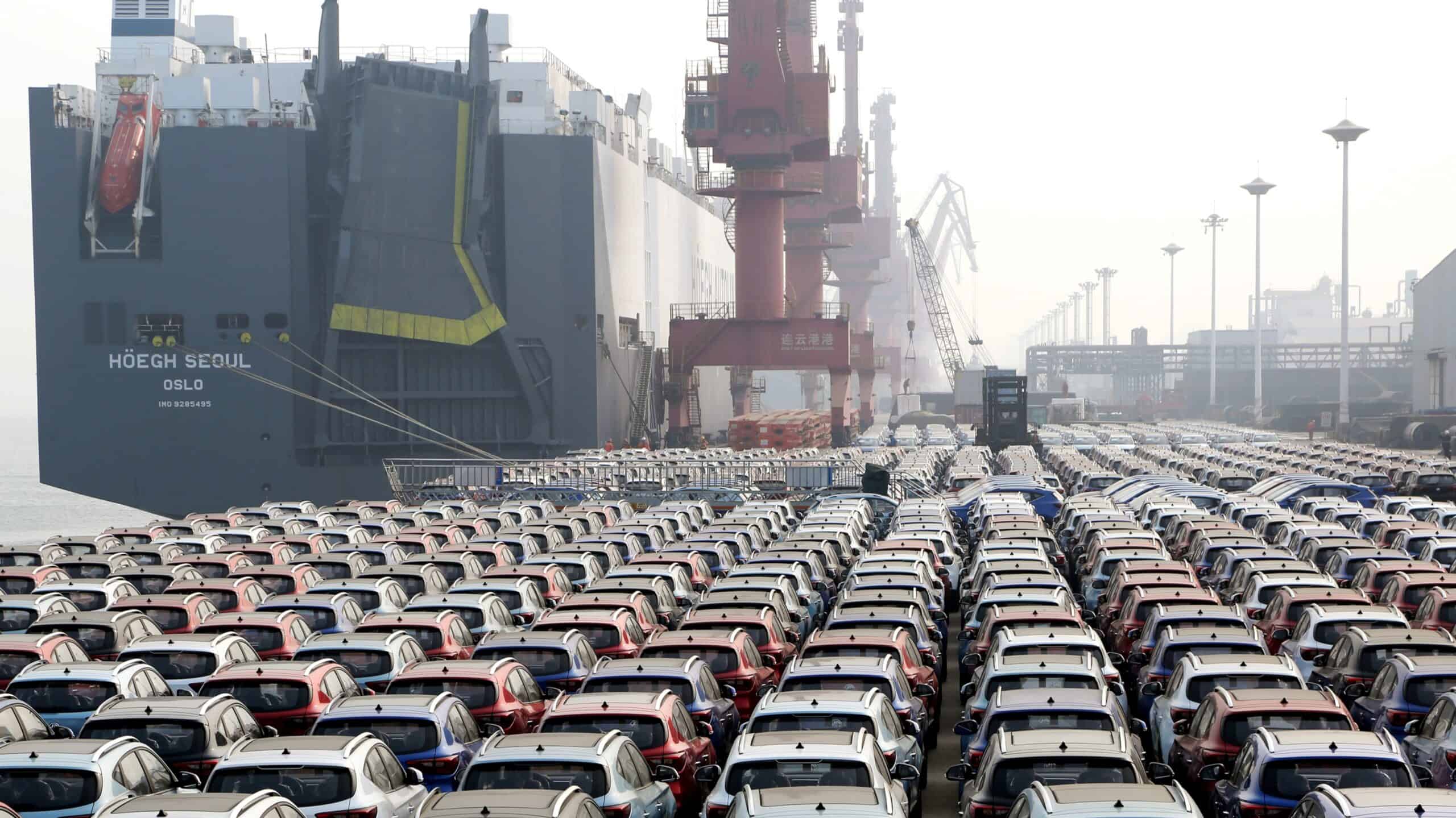China ranks first in car exports. Where are they sold? Which car companies export the most?
April 23, 2024 Tina
In the increasingly fierce competition in the global automobile market, China has emerged as the world’s largest automobile exporter. With its huge production capacity and export growth, it has successfully surpassed Japan and become the world’s largest automobile exporter.
Especially the astonishing data in 2023 – total sales of 30.09 million vehicles and exports of 4.91 million vehicles, indicate the strong momentum of China’s automobile industry. This article will delve into this phenomenon and analyze the main export destinations and key brands in China’s export automobile market.
In 2023, China successfully achieved this historic transformation, exporting 4.91 million vehicles, a significant year-on-year increase. In the first three quarters of this year, export volume has reached 1.32 million vehicles, and is expected to exceed 6.5 million vehicles for the whole year, further consolidating its number one position in the world and widening the competitive gap with Japan.
Behind this achievement, major car companies are actively seeking advantages in maritime transportation and improving export efficiency by optimizing transportation methods.
So, which countries have become the main buyers of Chinese cars? According to 2023 data, Russia is the largest export market for Chinese automobiles, exporting a total of 909,000 vehicles, accounting for nearly 19%. The two major brands Chery and Great Wall performed well here, contributing nearly 120,000 vehicles and more than 100,000 vehicles respectively.
Others such as Geely and Changan also rank at the top of Russia’s sales rankings. In addition, countries such as Mexico, Belgium, and Thailand are also important importing countries. Although some of these countries, such as Mexico, import huge amounts, actual sales data show that direct registration of Chinese cars in Mexico only accounts for a small part, and most of the vehicles are actually registered in Mexico. It flows upward to other parts of North America, with Mexico playing an important transit role.
Overall, the success of China’s automobile exports is not only reflected in the total volume, but also in the precise positioning and brand strategy of different markets. As globalization deepens, Chinese car companies will continue to explore new export channels and expand brand influence to meet the needs of global consumers. In the future, whether China can continue to maintain its leading position in automobile exports will undoubtedly have a profound impact on the global automobile industry.

In the increasingly fierce competition in the global automobile market, the export performance of Chinese automobile companies is eye-catching. According to statistics, among the 4.91 million vehicles exported by China in 2023, although the proportion of new energy vehicles has increased, fuel vehicles still dominate. It is worth noting that in addition to local independent brands, foreign brands such as Tesla and international brands produced in China also contribute to the export market.
Specifically, the company with the most outstanding export performance is SAIC Motor, which topped the list with 1.099 million units. This is due to SAIC’s acquisition of the popular British brand MG. MG’s outstanding performance in the European market is particularly significant, contributing more than 60% of SAIC’s export share in 2023 alone.
In the list, we found many well-known independent brands, such as Chery, Geely, Changan, Great Wall and BYD, and their export products mainly focus on independent models.
However, the performance of new car-making forces in the export market is relatively small, which shows that the advantages of established traditional car companies in the export field are more obvious. Among exported cars, fuel vehicles still account for about 75%, while new energy vehicles account for only about 25%. This reflects the current status and trends of the global automobile consumer market.
In general, China’s automobile export industry shows diversified characteristics, including the rise of local brands and cooperation with foreign brands. Although the export proportion of new energy vehicles is growing, fuel vehicles are still the mainstream.
In the future, with technological advancement and changes in consumer demand, the export share of new energy vehicles is expected to further increase, which will be a major challenge and opportunity for Chinese automakers in global competition.
With the rapid development of science and technology and the increasing awareness of environmental protection, new energy vehicles are gradually becoming mainstream around the world. A latest data shows that China’s new energy vehicle market is developing strongly. Especially in April 2024, the penetration rate of domestic new energy vehicles exceeded the 50% mark, indicating that this trend is unstoppable.
This not only reflects consumers’ acceptance of sustainable transportation methods, but also marks that China’s automobile industry is undergoing a profound change.
First, with the widespread acceptance of new energy vehicles in the domestic market, export volumes are expected to increase significantly in the future. This globalization trend is a huge opportunity for independent new energy brands. They are expected to take this opportunity to expand their international influence and enhance their brand image.
In fact, Chinese new energy vehicle manufacturers are gradually emerging, gradually filling the needs of the international market with their innovative technology and cost-effective advantages.
For Chinese automobile service providers such as our Cindy-Auto, shipments are also increasing day by day, and the growth rate is very rapid. In 2023, our annual export volume of cars will reach 2,568 units, and judging from the current situation, the number of cars exported by our company in 2024 is expected to exceed 5,000 units. Since we have a very advantageous supply chain and transportation chain, our company is the most helpful to our customers in every aspect.
Conclusion: To sum up, the rise of China’s automobile industry in the new energy era is a historic turning point. From lagging behind for a long time to now leading the trend, domestic new energy vehicles are catching up with or even surpassing international standards at an unprecedented speed. This milestone of 50% penetration is not only a breakthrough in data, but also the establishment of a new image of China’s automobile industry in global competition.
We have reason to believe that domestic new energy vehicles will continue to shine in the future and make greater contributions to green travel in China and around the world. Therefore, let us cheer for the vigorous development of China’s new energy vehicle industry and witness the arrival of this historic moment.




